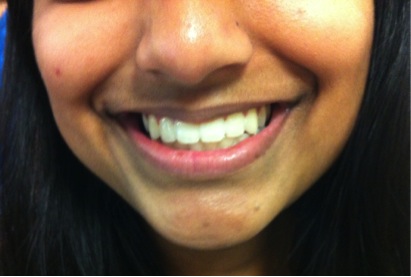Why People Smile

A smiling face that seems to welcome everyone. Unfortunately, society has changed the significance of smiles as they are seen far too often.
March 17, 2014
Recently in my AP Language class, we were told to read a short piece titled “Why Women Smile” by Amy Cunningham. The reading began by pointing out how women feel the need to smile for reasons other than actual happiness. I was excited to see where this piece was going because I always wonder whether people’s happiness is genuine. While the piece was very good, and made excellent points, I found myself somewhat disappointed at the end. True to its name, the writing focused only on women. It said that women feel forced to smile because that is what society expects of them. I completely agree, but I think that the situation is the same for both genders, and that needs to be recognized.
We all know those people that always seem happy. They are there to brighten the mood with a smile or help their friends in need, but there is no telling what they are actually thinking. Some do it because they want to make sure everyone around them is happy, and others do it because they don’t like opening up to people. The point is, not everyone who smiles is happy.
Society teaches us that we need to be happy. People in the workforce are told to smile at customers, adults naturally smile at young children, and people are always quick to smile for a quick picture. I can remember countless occasions throughout my life where I have been extremely upset, but when I see a camera, the tears stop and the smile comes out.
Cunningham mentioned an investigation where scientists found that there were about twelve different types of smiles that people use for different situations. Twelve. That is for more than the one emotion that we typically associate smiles with: happiness. If there are at least eleven other things that people smile for, how are people able to know what the smiles actually mean? There is too much to decipher and pilfer through to get to the truth behind the smile.
Honestly, it seems like a smile doesn’t mean anything anymore. While some are heartfelt, others are only offered because of social expectations. And the sad thing is, I don’t know if that is ever going to change again. People have gotten so used to seeing smiles everywhere that they go that there is no substance behind them. Smiling has become the expectation.
Through her writing, Cunningham was able to provide more insight as to the real reason that women smile. I think that her writing could be expanded to society as a whole (at least in the United States). What was once a symbol of happiness and joy has now become mundane, and often offered up to conceal the truth. People have become so deceitful that even their smiles are lying. I did not write this to say that smiling is bad. Making people happy with a couple simple muscle movements is always a positive thing. I merely wanted to point out some of the difficulties that have developed as a result of people being too eager to please.
There are still true smiles in the world. Ones that are accompanied by sparkling eyes and rows of teeth. And then there are smiles meant to mask emotions and deter an audience. The tricky part is figuring out which ones are which.








